Introduction
While PFAS are known for their resistance to water, heat, and grease, growing research suggests that their persistence in the environment comes at a grave cost to human health.
One of the most alarming connections being explored is the potential link between PFAS exposure and non-Hodgkin’s lymphoma (NHL), a group of blood cancers that originate in the lymphatic system. Given that PFAS bioaccumulate in human tissue and disrupt immune function, researchers are investigating their role in increasing the risk of NHL.
This article delves into the biological mechanisms by which PFAS may contribute to NHL, reviews key epidemiological studies, and discusses public health implications.
Understanding Non-Hodgkin’s Lymphoma
What is Non-Hodgkin’s Lymphoma?
Non-Hodgkin’s lymphoma (NHL) is a diverse group of blood cancers that develop in lymphocytes, a type of white blood cell crucial for immune function. Unlike Hodgkin’s lymphoma, NHL encompasses a wide range of subtypes that vary in aggressiveness and treatment response. Common types include:
- Diffuse large B-cell lymphoma (DLBCL) – The most common aggressive form of NHL.
- Follicular lymphoma – A slow-growing but recurrent form of NHL.
- Mantle cell lymphoma – A rare but fast-growing variant.
- T-cell lymphomas – A diverse category of NHL affecting T lymphocytes.
NHL symptoms can include swollen lymph nodes, persistent fatigue, fever, night sweats, unexplained weight loss, and frequent infections. While genetic factors, viral infections, and autoimmune conditions are known risk factors, environmental exposures, particularly to industrial chemicals, are increasingly under scrutiny.
What are the symptoms of non-Hodgkin’s lymphoma?
Non-Hodgkin’s Lymphoma symptoms can include:
- Swollen lymph nodes
- Persistent fatigue
- Fever
- Night sweats
- Unexplained weight loss
- Frequent infections
While genetic factors, viral infections, and autoimmune conditions are known risk factors, environmental exposures, particularly to industrial chemicals, are increasingly under scrutiny and showing scientific links to developing NHL.
How PFAS Exposure May Lead to Developing NHL
Research suggests that PFAS may contribute to NHL development through several biological pathways, including immune suppression, chronic inflammation, oxidative stress, and direct genotoxic effects on lymphocytes.
1. Immune System Suppression and Dysregulation
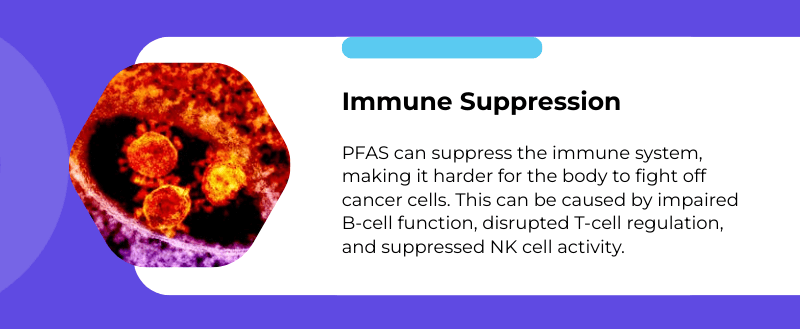
A functional immune system is essential for eliminating abnormal cells before they develop into malignancies. PFAS have been shown to alter immune system function in ways that increase susceptibility to NHL:
- Reduction in B-Cell Function: A 2020 study in Frontiers in Immunology found that exposure to PFAS reduced the production and functionality of B cells, which are a critical component of the adaptive immune system. B-cell dysfunction is a hallmark of many NHL subtypes.
- Disrupted T-Cell Regulation: Research published in Environmental Research (2021) demonstrated that PFAS exposure affects regulatory T cells (Tregs), leading to immune system imbalances that may allow cancerous cells to evade immune surveillance.
- Impaired Natural Killer (NK) Cells: NK cells are responsible for detecting and destroying cancerous or virally infected cells. A study in Toxicological Sciences (2019) found that PFAS exposure suppresses NK cell activity, reducing the body’s ability to eliminate early-stage cancerous cells.
2. Chronic Inflammation as a Precursor to Lymphoma
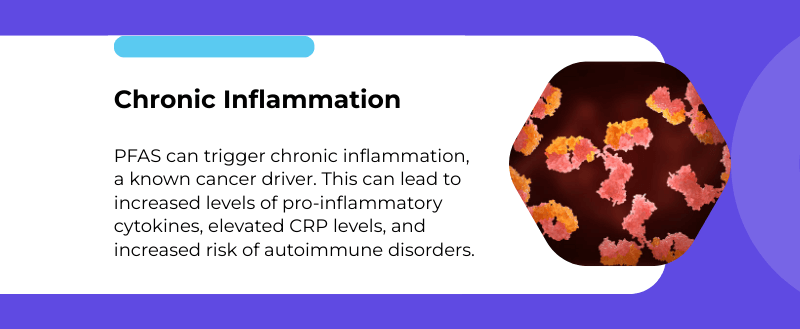
Chronic inflammation is a well-established driver of cancer, and PFAS exposure has been consistently linked to inflammatory responses:
- Elevated Cytokine Levels: A study in Nature Reviews Cancer (2022) identified increased levels of pro-inflammatory cytokines, such as IL-6 and TNF-α, in individuals with high PFAS blood levels. These inflammatory markers contribute to DNA damage and abnormal lymphocyte proliferation.
- Increased C-Reactive Protein (CRP) Levels: CRP is an indicator of systemic inflammation. A study in JAMA Oncology (2023) found that individuals exposed to high PFAS concentrations had significantly elevated CRP levels, correlating with higher NHL risk.
- Autoimmune Disorders and NHL Risk: PFAS exposure has been linked to autoimmune diseases such as lupus and rheumatoid arthritis, both of which increase the likelihood of developing NHL due to chronic immune activation and cellular damage.
3. Oxidative Stress and DNA Damage
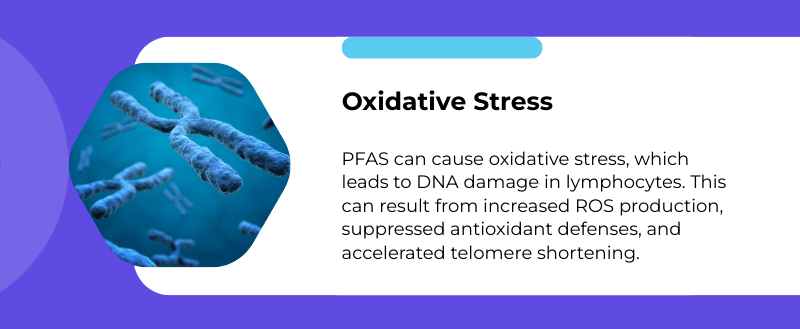
Oxidative stress occurs when there is an imbalance between free radicals and the body’s ability to neutralize them, leading to cellular damage. PFAS contribute to oxidative stress through multiple mechanisms:
- Increased Reactive Oxygen Species (ROS) Production: Research published in Free Radical Biology and Medicine (2021) found that PFAS exposure generates excessive ROS in lymphocytes, leading to mitochondrial dysfunction and genetic instability.
- Suppression of Antioxidant Defenses: PFAS have been shown to impair the body’s natural antioxidant response by depleting glutathione, a key antioxidant that protects cells from oxidative damage. A study in Environmental Toxicology and Chemistry (2020) demonstrated that PFAS exposure reduces glutathione levels in blood-forming cells.
- Telomere Shortening and Chromosomal Instability: A 2022 study in Carcinogenesis suggested that PFAS exposure accelerates telomere shortening, a marker of cellular aging and genomic instability. Shortened telomeres in lymphocytes are strongly associated with an increased risk of NHL.
4. Direct Genotoxic Effects on Lymphocytes
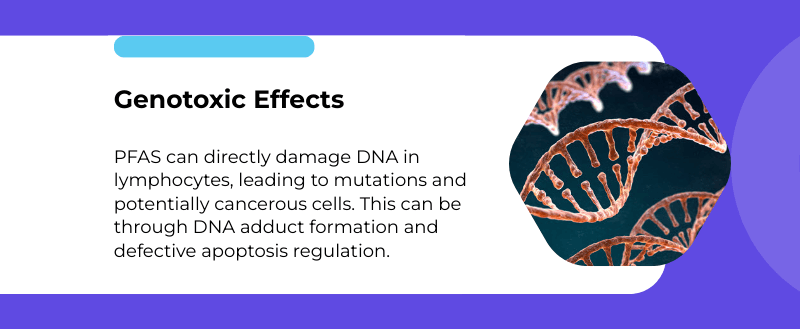
Beyond indirect mechanisms, PFAS have been shown to directly damage DNA in immune cells:
- DNA Adduct Formation: A study in Mutagenesis (2023) found that PFAS metabolites can bind to DNA, creating adducts that lead to mutations in lymphocyte precursors.
- Defective Apoptosis Regulation: Apoptosis, or programmed cell death, is a mechanism the body uses to eliminate potentially cancerous cells. PFAS disrupt apoptosis by altering key regulatory proteins, such as p53 and Bcl-2, allowing mutated cells to survive and proliferate.
Evidence Linking PFAS and Non-Hodgkin’s Lymphoma
Several large-scale epidemiological studies have established an association between PFAS exposure and an increased risk of NHL:
- C8 Health Project (2013): A study of over 69,000 individuals exposed to PFOA-contaminated water near the DuPont facility in Parkersburg, West Virginia, found an elevated incidence of NHL compared to unexposed populations.
- NHANES Study (2020): The National Health and Nutrition Examination Survey (NHANES) reported that individuals with higher PFAS blood levels had a significantly increased likelihood of being diagnosed with NHL.
- Veteran and Military Base Exposure Studies: Military personnel stationed at PFAS-contaminated bases have reported higher rates of NHL compared to national averages, prompting further investigation by the Department of Veterans Affairs.
- Aarhus University Study (2022): Researchers in Denmark found a strong correlation between occupational exposure to PFAS and increased incidences of NHL among factory workers handling PFAS-containing materials.
- Harvard University Study (2023): A study analyzing U.S. firefighter health records found that firefighters exposed to PFAS-containing aqueous film-forming foam (AFFF) had a disproportionately high rate of NHL compared to the general population.
Who Is Most at Risk?
Certain populations face an elevated risk of PFAS-induced neurotoxicity and PD development:
- Individuals in High-Exposure Areas: People living near PFAS-contaminated water sources or industrial sites.
- Firefighters and Military Personnel: Due to repeated exposure to PFAS-containing firefighting foam.
- Elderly Individuals: Age is the biggest risk factor for Parkinson’s, and PFAS exposure may accelerate neurodegeneration.
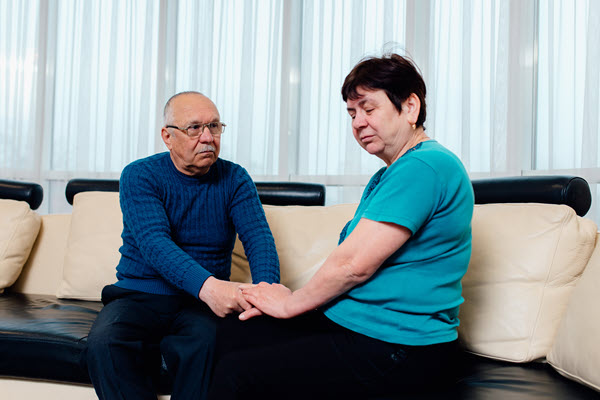
Ongoing AFFF Lawsuit and NHL Claims
Aqueous film-forming foam (AFFF), used extensively by military personnel and firefighters, has been identified as a significant source of PFAS exposure. The ongoing AFFF lawsuit seeks compensation for individuals who developed cancer, including non-Hodgkin’s lymphoma, due to prolonged exposure to PFAS-laden firefighting foam.
Lawsuit Background
Who qualifies to join the lawsuit?
Military veterans and their dependents, firefighters, and industrial workers diagnosed with non-Hodgkin’s Lymphoma and other cancers may be eligible for compensation. You can find out more about the AFFF lawsuit here: AFFF Lawsuit Registration
Current Legal Status:
As of 2025, settlements and trials are ongoing, with plaintiffs pushing for accountability and financial restitution for medical expenses and suffering.
Mitigating PFAS Exposure and Reducing NHL Risk
Given the growing evidence linking PFAS to NHL, individuals can take proactive measures to minimize exposure:
- Filter Drinking Water: Use reverse osmosis or activated carbon filtration systems to remove PFAS from household water supplies.
- Avoid PFAS-Containing Products: Limit the use of nonstick cookware, stain-resistant fabrics, and fast food packaging treated with PFAS.
- Choose Safer Personal Care Products: Avoid beauty and skincare products containing PTFE or perfluorinated ingredients.
- Consume Organic Produce: Some pesticides contain PFAS. Eating organic produce can help reduce exposure.
- Advocate for Policy Changes: Support legislation aimed at banning or regulating PFAS use and funding cleanup efforts.
The link between PFAS exposure and non-Hodgkin’s lymphoma is becoming increasingly evident, with multiple studies identifying immune suppression, chronic inflammation, oxidative stress, and direct genotoxic effects as potential mechanisms.
While more research is needed to establish causation definitively, the existing data underscores the urgent need for regulation, public awareness, and personal risk mitigation strategies. The ongoing AFFF lawsuit further highlights the growing legal and medical recognition of PFAS as a contributing factor to NHL, providing affected individuals with potential avenues for justice and compensation.




